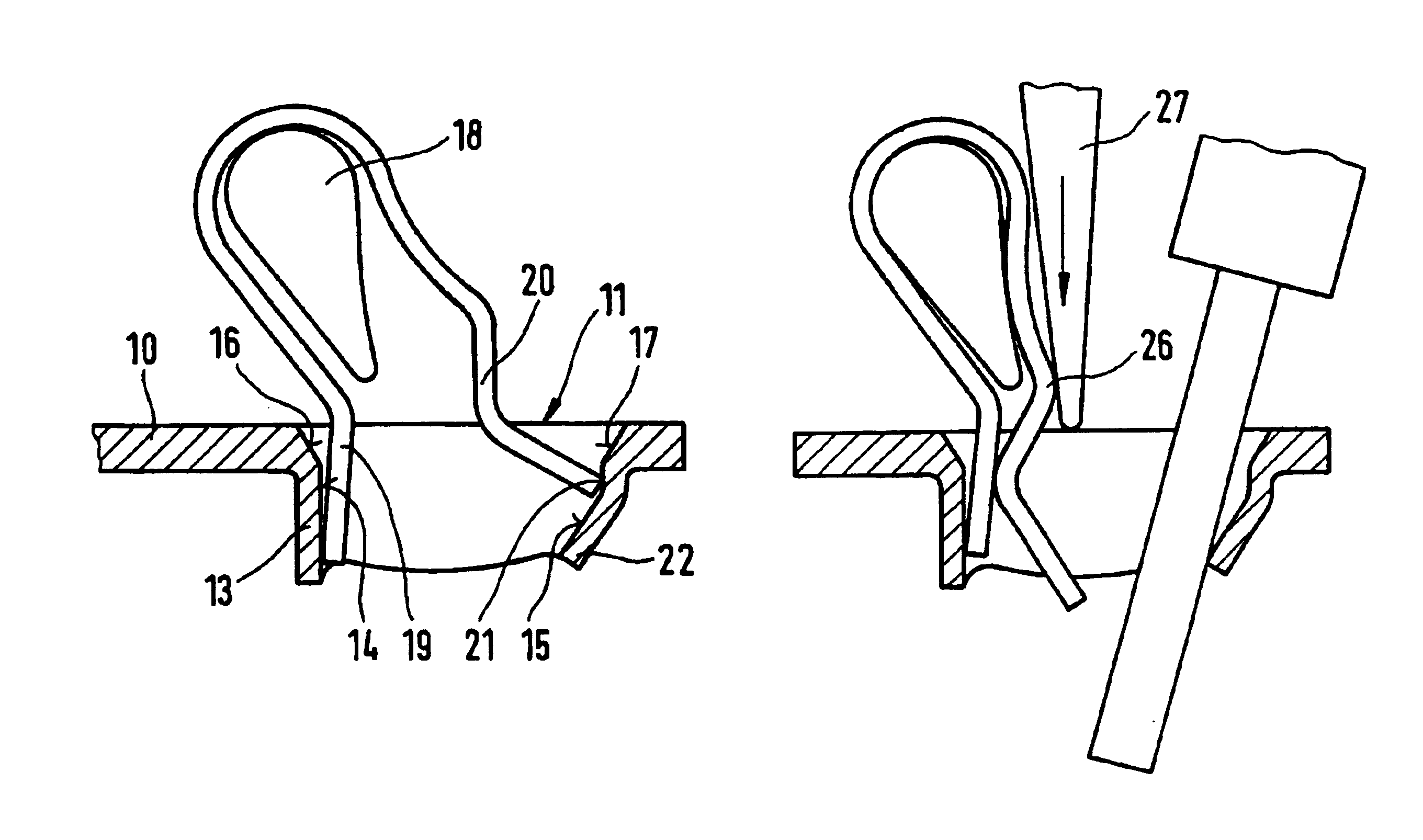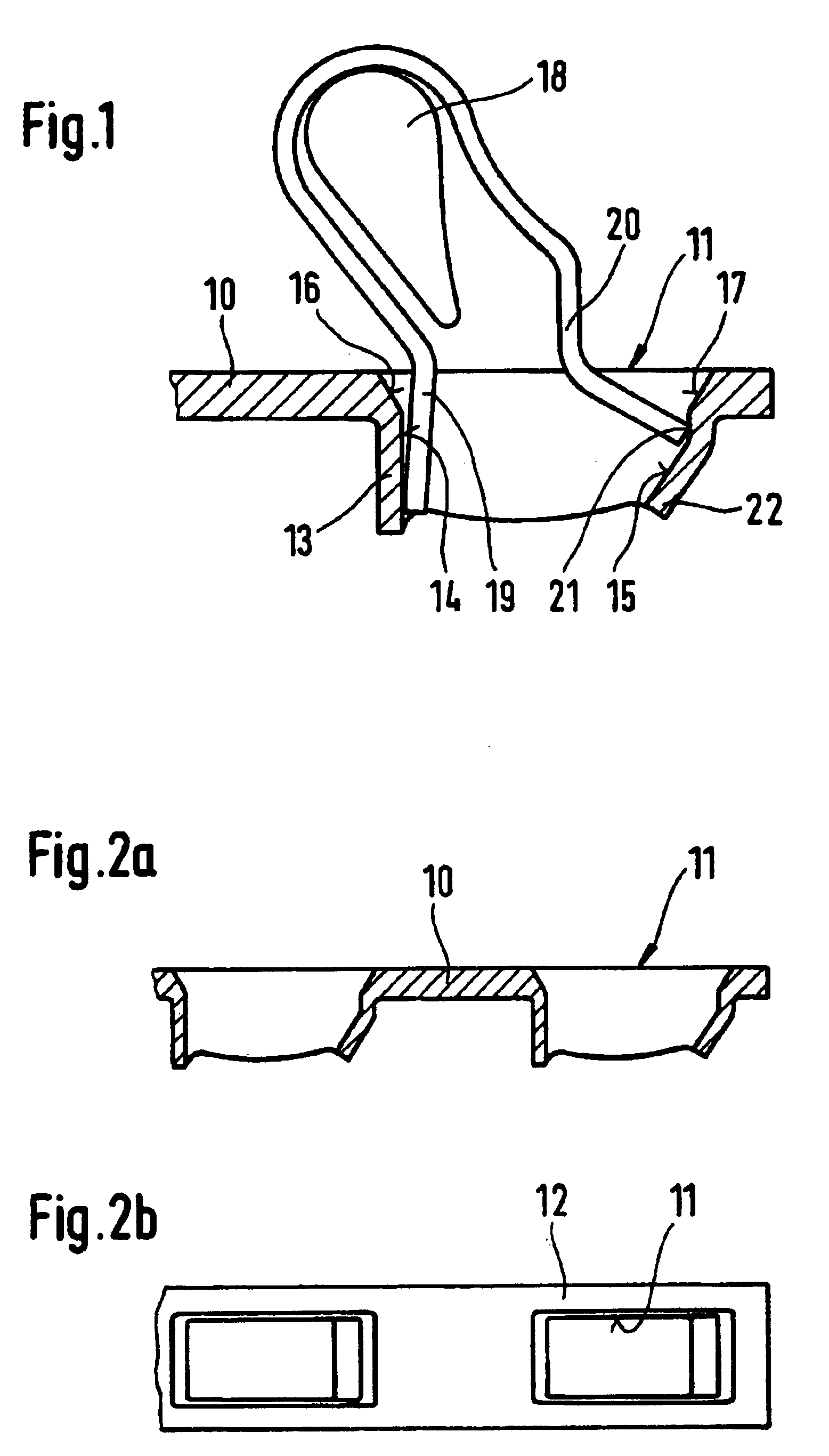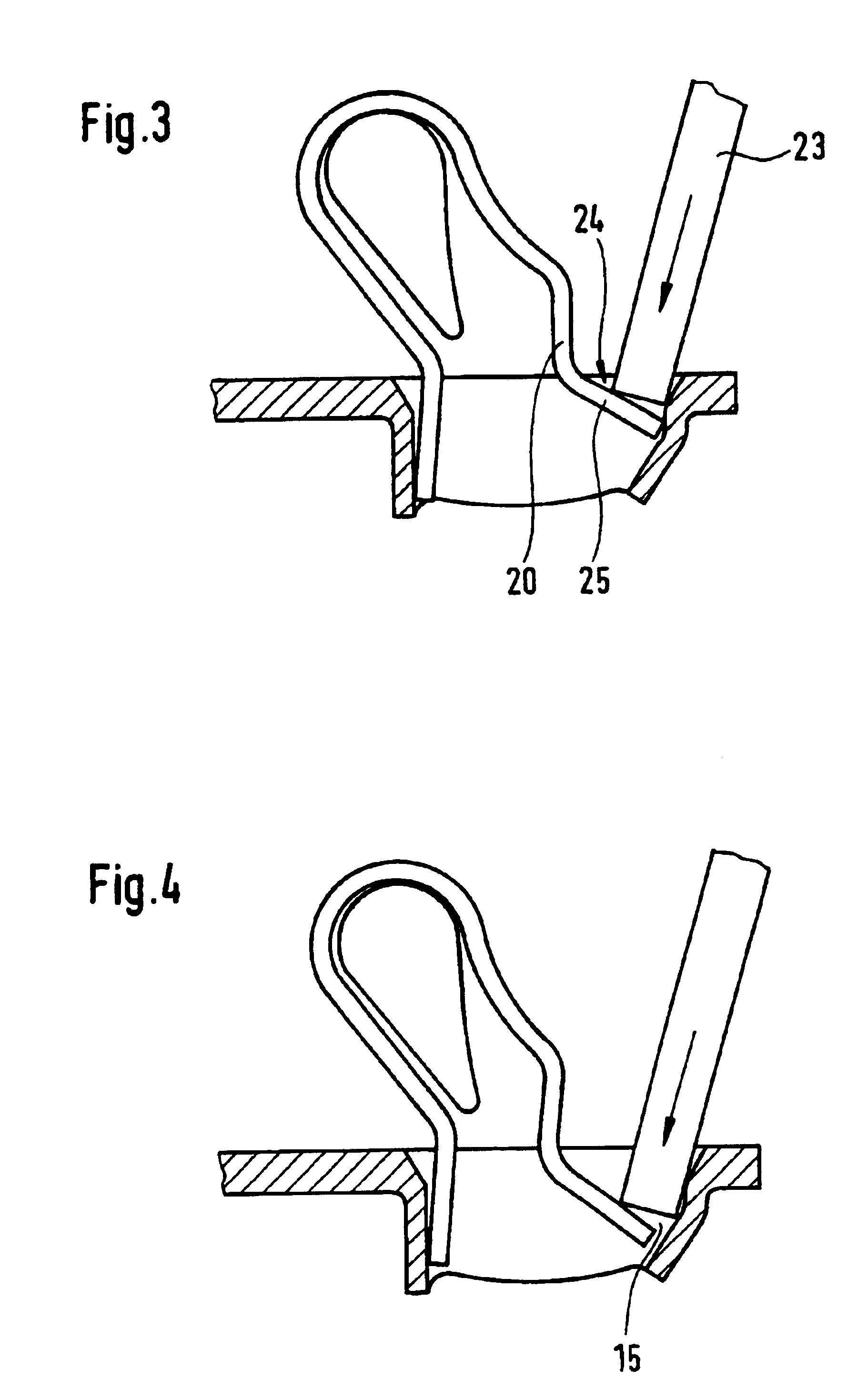Spring-force clamp connector for an electrical conductor
a technology of clamping connector and electrical conductor, which is applied in the direction of fastening/insulating connecting parts, contact members penetrating/cutting insulation/cable strands, electrical apparatus, etc., can solve the problem of only minimal current conduction value between the inner wall area of the current conduction value between the aperture collar and the clamped electrical conductor is only minimally sufficient. problem, to achieve the effect of solving the problem
- Summary
- Abstract
- Description
- Claims
- Application Information
AI Technical Summary
Benefits of technology
Problems solved by technology
Method used
Image
Examples
Embodiment Construction
A conductive core piece 10 including a four-cornered material passage 11 is illustrated in FIGS. 1-2b. As best seen in FIGS. 2a and 2b, material passages 11 of random number may preferably be positioned in a row closely adjacent to one another. The shape of a narrow strip of material, which has edge pieces 12 with a small width in the region of the material passages, can be selected for the conductive core piece.
In the present embodiment, the material passage 11 preferably includes an annular, closed aperture collar 13 having inner wall areas 14 and 15. The collar 13 is preferably condituous with the upper side of the conductive core piece. The transitions from the upper side of the conductive core piece on the inner wall areas of the aperture collar can be shaped as round or oblique lead-in places 16 and 17, respectively.
In the material passage 11, a substantially U-shaped bent leaf spring can be inserted. The leaf spring sits with its rear spring arc on a plastic projection piece ...
PUM
 Login to View More
Login to View More Abstract
Description
Claims
Application Information
 Login to View More
Login to View More - R&D
- Intellectual Property
- Life Sciences
- Materials
- Tech Scout
- Unparalleled Data Quality
- Higher Quality Content
- 60% Fewer Hallucinations
Browse by: Latest US Patents, China's latest patents, Technical Efficacy Thesaurus, Application Domain, Technology Topic, Popular Technical Reports.
© 2025 PatSnap. All rights reserved.Legal|Privacy policy|Modern Slavery Act Transparency Statement|Sitemap|About US| Contact US: help@patsnap.com



